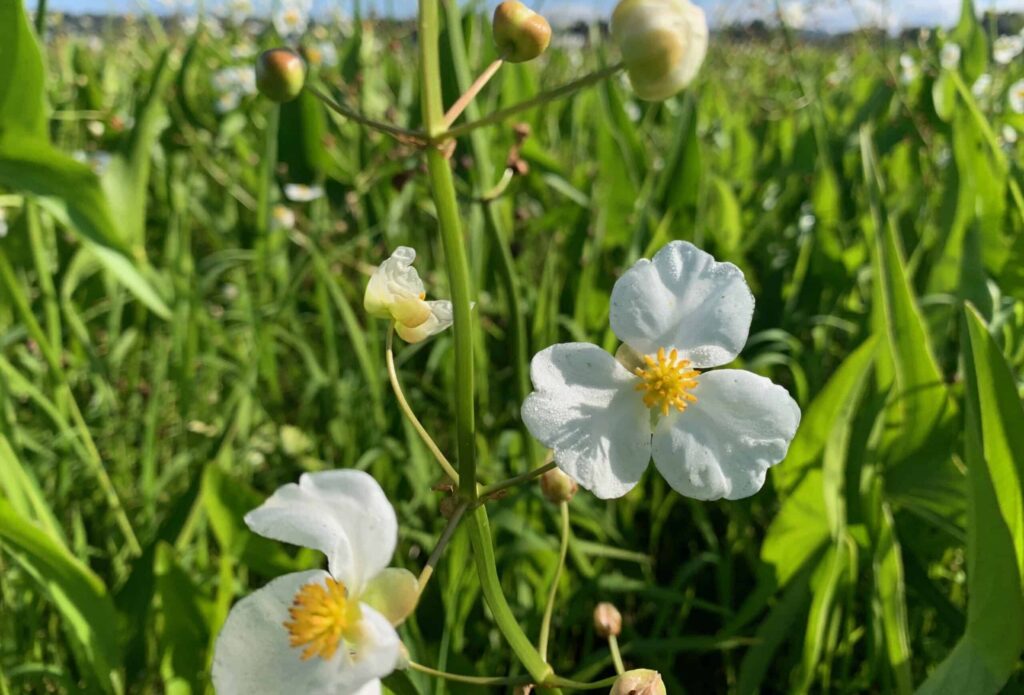
Wapato is a tuberous plant that can be found throughout North America, northern Europe and Asia. It grows in wetland fields that can be many acres in size. It is found in the Tualatin River watershed in smaller patches. It can be identified by its large arrowhead shaped leaves and its white flowers with a yellow center. Wapato tubers are formed at the ends of horizontally creeping stems called rhizomes. Wapato can provide an abundant source of food, typically about one pound of tubers per square meter.
Wapato tubers were a very important “First Food” for the native Katapuyans. They consumed the tubers baked like a potato and as bread cake which was called Chaplil. Lewis & Clark named the Columbia River floodplain from the Sandy River to Cowlitz River Wapato Valley due to the abundance of Wapato. The introduction of carp and cattle to the lower Columbia River and the draining of Wapato wetlands has substantially reduced the amount of Wapato in the lower Columbia River.